ahmedbutt2015-blog
Space Lover
7 posts
Latest Posts by ahmedbutt2015-blog
Be an Astronaut: NASA Seeks Explorers for Future Space Missions
NASA logo / NASA - Extra Vehicular Activities (EVA) patch. Nov. 4, 2015 In anticipation of returning human spaceflight launches to American soil, and in preparation for the agency’s journey to Mars, NASA announced it will soon begin accepting applications for the next class of astronaut candidates. With more human spacecraft in development in the United States today than at any other time in history, future astronauts will launch once again from the Space Coast of Florida on American-made commercial spacecraft, and carry out deep-space exploration missions that will advance a future human mission to Mars.
NASA Astronaut
The agency will accept applications from Dec. 14 through mid-February and expects to announce candidates selected in mid-2017. Applications for consideration as a NASA Astronaut will be accepted at: http://www.usajobs.gov The next class of astronauts may fly on any of four different U.S. vessels during their careers: the International Space Station, two commercial crew spacecraft currently in development by U.S. companies, and NASA’s Orion deep-space exploration vehicle. From pilots and engineers, to scientists and medical doctors, NASA selects qualified astronaut candidates from a diverse pool of U.S. citizens with a wide variety of backgrounds. “This next group of American space explorers will inspire the Mars generation to reach for new heights, and help us realize the goal of putting boot prints on the Red Planet,” said NASA Administrator Charles Bolden. “Those selected for this service will fly on U.S. made spacecraft from American soil, advance critical science and research aboard the International Space Station, and help push the boundaries of technology in the proving ground of deep space.” The space agency is guiding an unprecedented transition to commercial spacecraft for crew and cargo transport to the space station. Flights in Boeing’s CST-100 Starliner and SpaceX Crew Dragon will facilitate adding a seventh crew member to each station mission, effectively doubling the amount of time astronauts will be able to devote to research in space.
Astronaut Recruitment
Future station crew members will continue the vital work advanced during the last 15 years of continuous human habitation aboard the orbiting laboratory, expanding scientific knowledge and demonstrating new technologies. This work will include building on the regular six-month missions and this year’s one-year mission, currently underway aboard the station, which is striving for research breakthroughs not possible on Earth that will enable long-duration human and robotic exploration into deep space. In addition, NASA’s Space Launch System rocket and Orion spacecraft, now in development, will launch astronauts on missions to the proving ground of lunar orbit where NASA will learn to conduct complex operations in a deep space environment before moving on to longer duration missions on its journey to Mars. “This is an exciting time to be a part of America’s human space flight program,” said Brian Kelly, director of Flight Operations at NASA’s Johnson Space Center in Houston. “NASA has taken the next step in the evolution of our nation’s human spaceflight program – and our U.S. astronauts will be at the forefront of these new and challenging space flight missions. We encourage all qualified applicants to learn more about the opportunities for astronauts at NASA and apply to join our flight operations team.” To date, NASA has selected more than 300 astronauts to fly on its increasingly challenging missions to explore space and benefit life on Earth. There are 47 astronauts in the active astronaut corps, and more will be needed to crew future missions to the space station and destinations in deep space. Astronaut candidates (U.S. citizens) must have earned a bachelor’s degree from an accredited institution in engineering, biological science, physical science or mathematics. An advanced degree is desirable. Candidates also must have at least three years of related, progressively responsible professional experience, or at least 1,000 hours of pilot-in-command time in jet aircraft. Astronaut candidates must pass the NASA long-duration spaceflight physical. For more information about a career as a NASA astronaut, and application requirements, visit: http://www.nasa.gov/astronauts Related links: NASA’s Orion deep-space exploration vehicle: http://www.nasa.gov/Orion NASA’s Space Launch System rocket: http://www.nasa.gov/sls Commercial crew: https://www.nasa.gov/exploration/commercial/crew/index.html One-year mission: https://www.nasa.gov/content/one-year-crew Image, Video, Text, Credits: NASA/Tabatha Thompson/Kathryn Hambleton/Karen Northon/Johnson Space Center/Nicole Cloutier-Lemasters. Best regards, Orbiter.ch Full article
5 Myths About Becoming an Astronaut
Have you ever wondered if you have what it takes to become a NASA Astronaut? The term “astronaut” derives from the Greek word meaning “space sailor,” and refers to all who have been launched as crew members aboard NASA spacecraft bound for orbit and beyond.
We’re looking for a new class of astronauts to join the NASA team, and here are a few things to know.
Here are a few myths about becoming an astronaut:
MYTH: All astronauts have piloting experience.
FACT: You don’t need to be a pilot to be an astronaut. Flying experience is not a requirement, but could be beneficial to have.

MYTH: All astronauts have perfect vision.
FACT: It’s okay if you don’t have 20/20 vision. As of September 2007, corrective surgical procedures of the eye (PRK and LASIK), are now allowed, providing at least 1 year has passed since the date of the procedure with no permanent adverse after effects.

MYTH: All astronauts have advanced degrees like, a PhD.
FACT: While a Bachelor’s degree from an accredited university is necessary, an advanced degree is not required to become an astronaut.

MYTH: Astronauts are required to have military experience in order to be selected.
FACT: Military experience is not required to become an astronaut.

MYTH: You have to be a certain age in order to be an astronaut.
FACT: There are no age restrictions. Astronaut candidates selected in the past have ranged between the ages of 26 and 46, with the average age being 34.

Okay, but What are the requirements?

Commander and Pilot Astronauts
Pilot astronauts serve as International Space Station commanders and pilots. During flight, the commander has onboard responsibility for the vehicle, crew, mission success and safety of flight. The pilot assists the commander in controlling and operating the vehicle.
Basic requirements for an Astronaut Pilot include the following:
Bachelor’s degree from an accredited institution in engineering, biological science, physical science or mathematics. An advanced degree is desirable. Quality of academic preparation is important.
At least 1,000 hours pilot-in-command time in jet aircraft. Flight test experience is highly desirable.
Ability to pass a NASA space physical which is similar to a military or civilian flight physical and includes the following specific standards:
Distant visual acuity: 20/100 or better uncorrected, correctable to 20/20, each eye Blood pressure: 140/90 measured in a sitting position Height between 62 and 75 inches
Mission Specialist Astronauts
Mission specialist astronauts work with the commander and the pilot and have overall responsibility for coordinating operations in the following areas: systems, crew activity planning, consumables usage and experiment/payload operations.
Basic requirements for a Mission Specialist include the following:
Bachelor’s degree from an accredited institution in engineering, biological science, physical science or mathematics. Degree must be followed by at least three years of related, progressively responsible experience. An advanced degree is desirable and may be substituted for part or all of the experience requirement. Quality of academic preparation is important
Ability to pass a NASA space physical which is similar to a military or civilian flight physical and includes the following specific standards:
Distant visual acuity: 20/200 or better uncorrected, correctable to 20/20, each eye Blood pressure: 140/90 measured in a sitting position Height between 58.5 and 76 inches
Applications for our next astronaut class open on Dec. 14! Visit: http://www.nasa.gov/astronauts/
Make sure to follow us on Tumblr for your regular dose of space: http://nasa.tumblr.com
Incredible . Due to these inventions and discoveries we can say: "Nothing is impossible"

Views of Pluto through the years.
More about Pluto >>
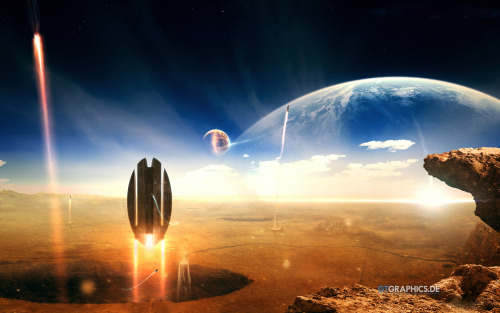
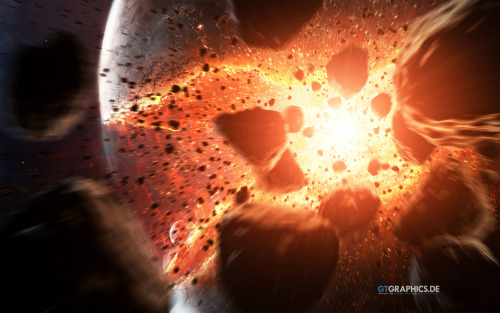
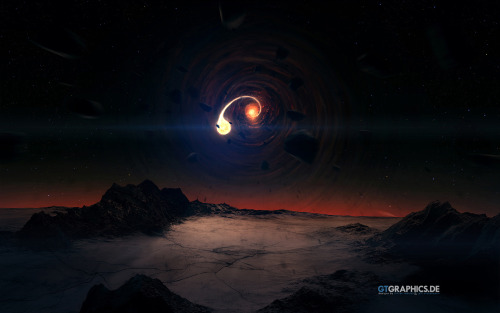
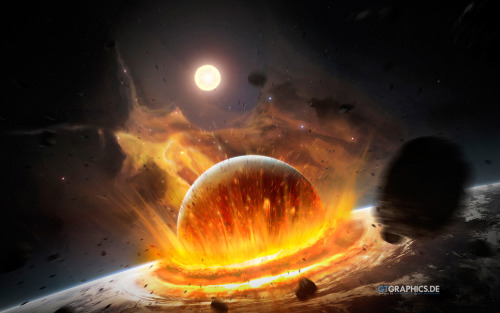
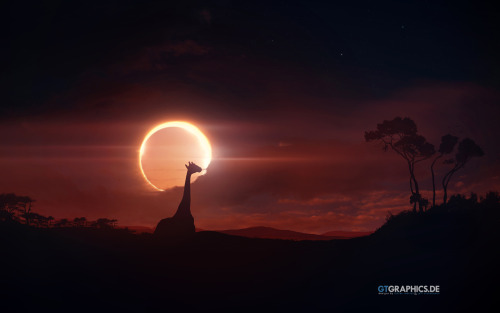
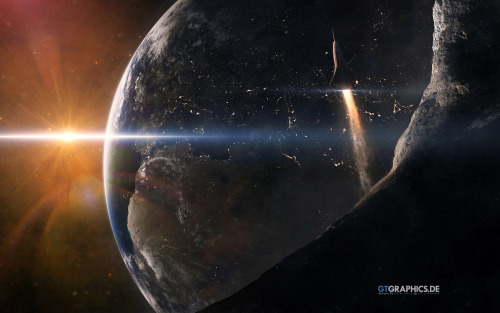
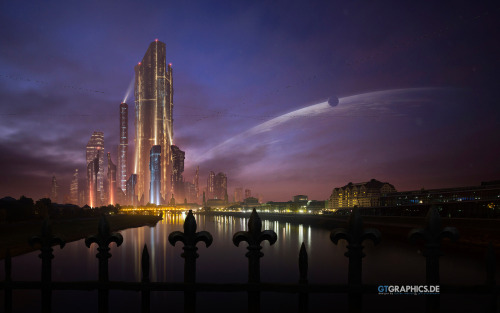
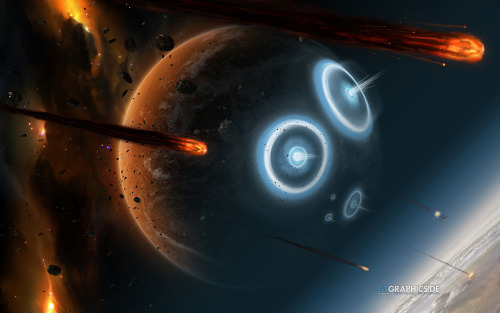
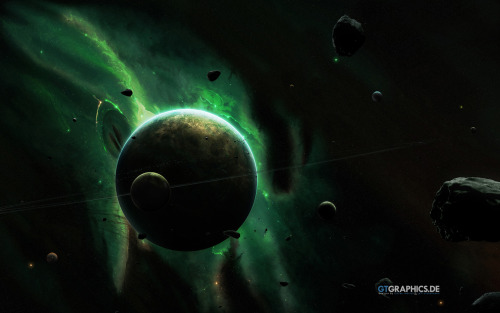
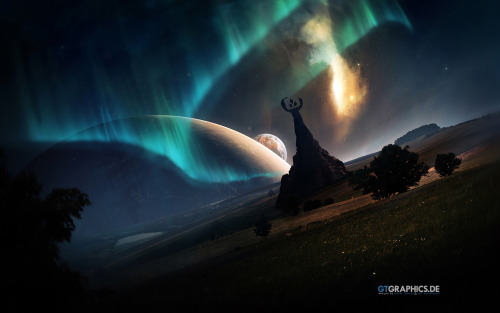
These pictures literally just took my heart away. Pictures of early universe destruction , some Aurora’s and some Sci fiction .
So whats you up for this October ..!!
What’s Up for October?

This month is filled with exciting celestial sights. Here are 10 targets you can view this month:
10. Unusual Sunset

During a sunset, our thick atmosphere absorbs most colors of sunlight, but red light is absorbed the least. Rarely, green flashes can be seen just above the sun’s edge. As the last sliver of the disk disappears below the horizon, be sure to watch its color.
9. Belt of Venus

Just after sunset, turn around and face east. A dark shadow will move up from the horizon and gradually cover the pinkish sky. This is caused from the Earth itself blocking the sunlight and is called the Earth Shadow or the Belt of Venus.
8. Crepuscular Rays

Also just after sunset, or before dawn, you may see rays of sunlight spread like a fan. These are called crepuscular rays and are formed when sunlight streams through gaps in the clouds or mountains.
7. Aurora Borealis

The northern lights, also known as the aurora borealis, are caused by collisions between gaseous particles in Earth’s atmosphere and charged particles released from the sun. The color of the lights can changed depending on the type of gas being struck by particles of solar wind. You can find out when and where to expect aurorae at the Space Weather Prediction Center.
6. Andromeda Galaxy

Did you now that The Andromeda Galaxy is one of the few you can actually see with your naked eye? In October, look nearly overhead after sunset to see it! This galaxy is more than twice the apparent width of the moon.
5. Moon Features

Nights in mid-October are excellent for viewing the features on the moon. Areas like the Sea of Tranquility and the site of the 1969 Apollo 11 landing will be visible.
4. A Comet

This month, the European Space Agency’s Rosetta mission target, a comet with a complicated name (Comet 67P Churyumov-Gerasimenko), is still bright enough for experienced astronomers to pick out in a dark sky. On October 9, you may be able to spot it in the east near the crescent moon and Venus.
3. Meteor Showers

There are multiple meteor showers this month. On the 9th: watch the faint, slow-moving Draconids. On the 10th: catch the slow, super-bright Taurids. And on the 21st: don’t’ miss the swift and bright Orionids from the dust of Comet Halley.
2. Three Close Planets

On October 28, you’ll find a tight grouping of Jupiter, Venus and Mars in the eastern sky before sunrise.
1. Zodiacal Light

The Zodiacal light is a faint triangular glow that can be seen from a dark sky after sunset or before sunrise. What you’re seeing is sunlight reflecting off dust grains that circle the sun in the inner solar system. These dust grains travel in the same plane as the moon and planets as they journey across our sky.
For more stargazing tools visit: Star Tool Box
Make sure to follow us on Tumblr for your regular dose of space: http://nasa.tumblr.com
Five Orion Technologies That Will Help Us Get Home From Mars
Orion is a key piece of NASA’s journey to Mars. The spacecraft, which was first tested in space last year, will enable crew to travel to deep space on the journey to the Red Planet and bring astronauts home safely. It’s a critical technology we’ll use to help NASA test, demonstrate and hone the skills and capabilities we need to operate farther and farther away from Earth.

Environmental Control and Life Support Systems
Water. Air. A temperate environment. A bathroom. These are some of the things astronauts need to survive the long journey back to Earth from Mars. NASA has developed an environmental control and life support system on the International Space Station and is designing such a system for Orion. The system can recycle carbon dioxide and make it back into useable air and process urine to make it into potable water, for example. Right now on the space station, engineers and astronauts are testing a filtering system for efficiency and reliability on long-duration missions. The investigation uses an amine-based chemical compound combined with the vacuum of space to filter and renew cabin air for breathing. When astronauts travel home from Mars, they won’t be able to count on the arrival of spare parts or extra supplies if something breaks or gets depleted, so engineers are hard at work developing reliable and robust technologies to keep crews alive and healthy in space.

Radiation protection
Astronauts traveling to and from Mars will be far away from the protective shield of Earth’s atmosphere and magnetic field, and their spacecraft and its systems will need to be able to protect against the full spectrum of space radiation. NASA is working now to develop protective methods.
Orion will use items already on board to protect the crew and create a temporary shelter in the aft bay of the spacecraft, which is the inside portion closest to the heat shield. This location minimizes the amount of equipment to move around while maximizing the amount of material that can be placed between the crew and the outside environment. The items that will be used include supplies, equipment and launch and re-entry seats as well as water and food. By using the items already on board, the astronauts benefit from additional shielding without adding to Orion’s mass.

Power and Propulsion
A spacecraft needs power and propulsion in space to refine its trajectory during the trip back to Earth. Orion will include a service module capable of helping the spacecraft make any necessary mid-course corrections. A service module provides power, heat rejection, in-space propulsion and water and air for crews, and NASA is working with ESA (European Space Agency) to provide Orion’s service module for its next mission in a partnership that will also bring international cooperation on the journey to Mars. The service module will provide propulsion, batteries and solar arrays to generate power and contain all the air, nitrogen and water for crews.
The ESA-provided element brings together new technology and lightweight materials while also taking advantage of spaceflight-proven hardware. For example, ESA is modeling several key components – like the solar arrays – from technology developed for its Automated Transfer Vehicle-series of cargo vessels, which delivered thousands of pounds of supplies to the space station during five missions between 2008 and 2015. NASA is providing ESA one of the Orbital Maneuvering System pods that allowed space shuttles to move in space to be upgraded and integrated into the service module.

Heat shield
When an uncrewed Orion was tested in space in 2014, the heat shield withstood temperatures of about 4,000 degrees Fahrenheit, or about twice as hot as molten lava. That heat was generated when the spacecraft, traveling at about 20,000 mph back toward our planet, made its way through Earth’s atmosphere, which acts as a braking mechanism to cause friction and slow down a returning spacecraft. Its speed was about 80 percent of what Orion will experience when it comes back from missions near the moon and will need to be even more robust for missions where return speeds, and therefore reentry temperatures, are higher.
Orion’s heat shield is built around a titanium skeleton and carbon fiber skin that provide structural support. A honeycomb structure fits over the skin with thousands of cells that are filled with a material called Avcoat. That layer is 1.6 inches at its thickest and erodes as Orion travels through Earth’s atmosphere.

Parachutes
A spacecraft bringing crews back to Earth after a long trip to Mars will need a parachute system to help it slow down from its high-speed reentry through the atmosphere to a relatively slow speed for splashdown in the ocean. While Earth’s atmosphere will initially slow Orion down from thousands of miles per hour to about 325 mph, its 11 parachutes will deploy in precise sequence to further slow the capsule’s descent. There are three forward bay cover parachutes that pull a protective cover off the top of the capsule, two drogue parachutes that deploy to stabilize the spacecraft, and three pilot parachutes that are used to pull out Orion’s three orange and white main parachutes that are charged with slowing the spacecraft to its final landing speed. The main parachutes are so big that the three of them together nearly cover an entire football field.
Engineers are currently building the Orion spacecraft that will launch on the world’s most powerful rocket, the Space Launch System, and will enable astronauts to travel farther into space than ever before on the journey to Mars.
Visit NASA on the Web for more information about Orion and NASA’s journey to Mars. http://www.nasa.gov/orion

Mark Watney didn’t worry about radiation, but real astronauts would. I’m helping and it’s RAD. Read more about JPL’s role in making “The Martian” a reality: http://go.nasa.gov/1McRrXw